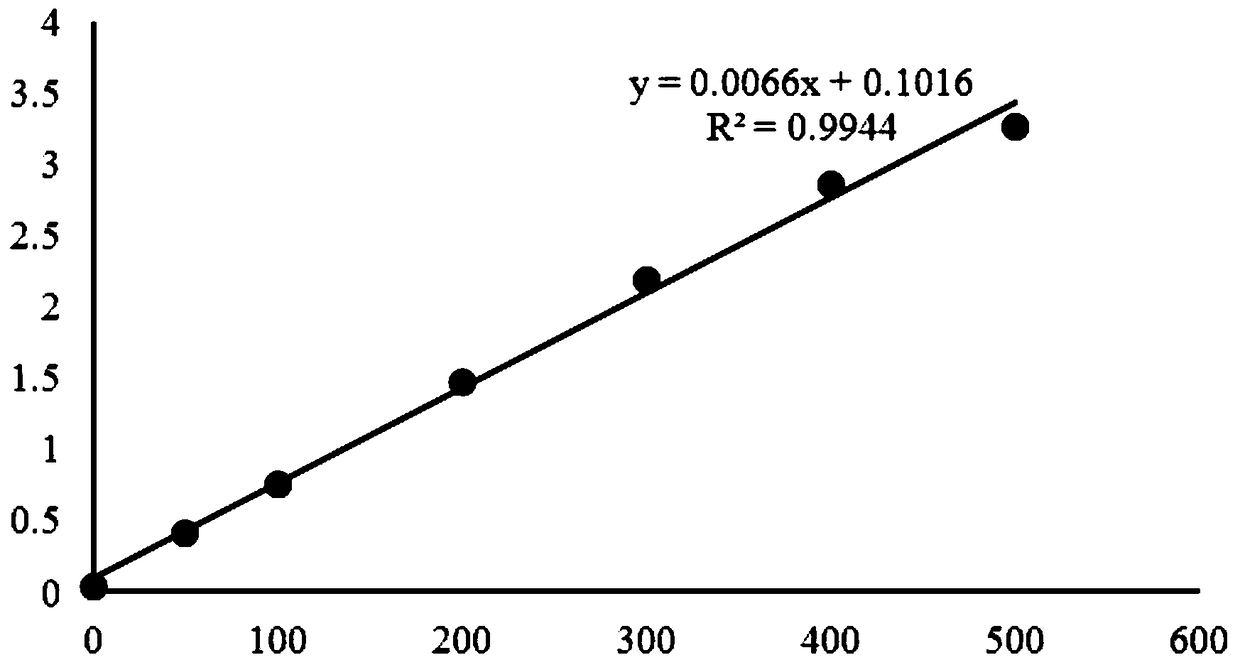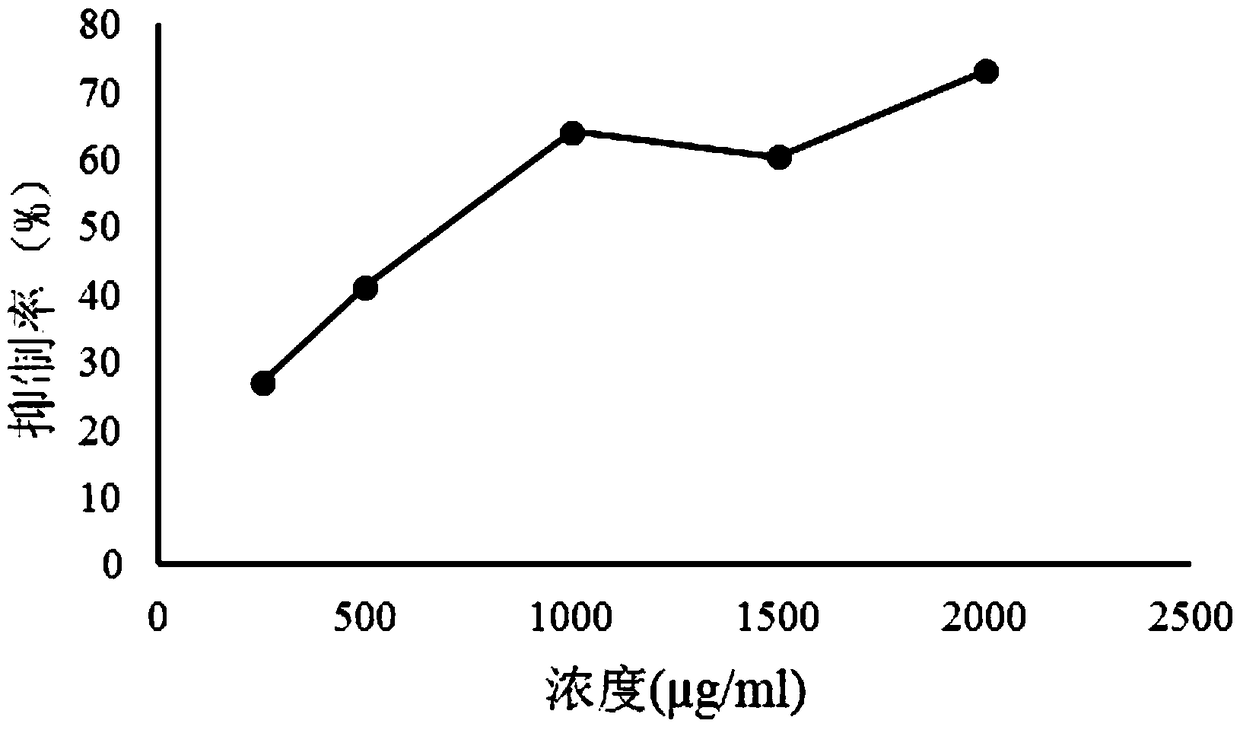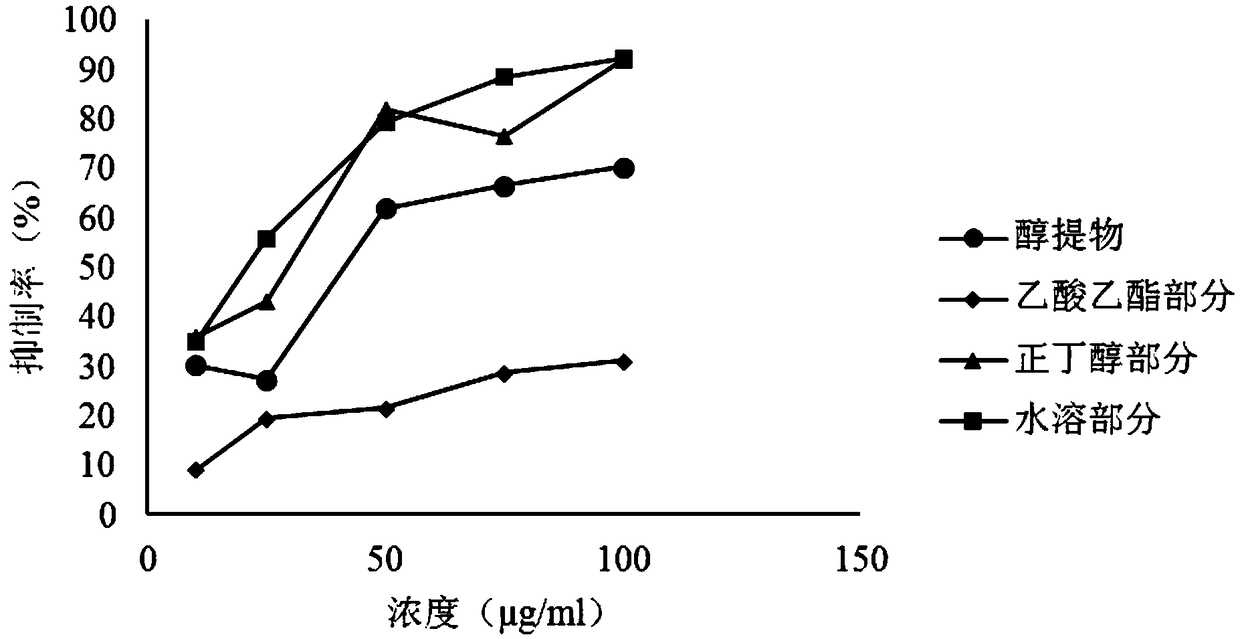Application of golden camellia seed extractive to alpha-glucosidase inhibitor
A technology of glucosidase and golden camellia, which is applied in the directions of drug combination, plant raw materials, medical preparations containing active ingredients, etc., and achieves the effects of mild conditions, broad application prospects and easy operation.
- Summary
- Abstract
- Description
- Claims
- Application Information
AI Technical Summary
Problems solved by technology
Method used
Image
Examples
Embodiment 1
[0041] The preparation of the ethyl acetate part, n-butanol part, water-soluble part of embodiment 1 golden camellia seed ethanol extract and ethanol extract
[0042] 1) Take 800g of dried Camellia japonica seeds and pulverize them with a pulverizer;
[0043] 2) After degreasing petroleum ether, heat and reflux extraction with 3 times the amount of 95% ethanol for 3 times, each time for 3 hours, to obtain Camellia japonica extract;
[0044] 3) The Camellia japonica extract was filtered with filter paper, the filtrates were combined, concentrated under reduced pressure to obtain an extract, and 76 g of the ethanol extract of Camellia japonica seeds was obtained; after taking 71 g of the ethanol extract of Camellia japonica seeds and adding an appropriate amount of water to suspend, successively distilled with ethyl acetate , n-butanol extraction, to obtain ethyl acetate part, n-butanol part and raffinate aqueous layer part, after concentrating, vacuum-dry to obtain ethyl acetat...
Embodiment 2
[0045] Example 2 Evaluation of inhibitory effect on α-glucosidase activity
[0046] Using percentage inhibition rate (I%) and half inhibitory concentration (IC 50 Value) combined method for evaluation. IC 50 Calculated using GraphPad Prism software, the percentage inhibition rate was calculated as follows:
[0047]
[0048] 1. Determination of α-glucosidase inhibitory activity of the ethanol extract of Camellia japonica seeds
[0049] The ethanol extract of Camellia japonica seeds was prepared with DMSO into sample solutions with five different concentrations of 0.2, 0.5, 1, 1.5, and 2 mg / ml, corresponding to final concentrations of 10, 25, 50, 75, and 100 μg / ml. Set up four groups, namely negative control group, blank group, sample measurement group, and sample control group; add 112 μl PBS, 20 μl 0.2U / ml α-glucosidase, 8 μL DMSO to the negative control group in turn, and incubate at 37°C for 15 minutes in a constant temperature incubator , add 20μl 2.5mmol / l PNPG, inc...
Embodiment 3
[0065] Example 3 Inhibition Types of α-Glucosidase Inhibition
[0066] According to the Lineweave-Burk mapping method, with 1 / [S] as the abscissa and 1 / V as the ordinate, draw the inhibition kinetic curves of the samples respectively, determine the inhibition type of the sample according to the position of the intersection point of the straight lines, and determine the inhibition type of the sample according to the position of the straight line intersection, according to the straight line when no sample is added Intersection with the x-axis = -1 / K m Get the K of α-glucosidase m value, and then according to the non-competitive inhibition kinetic equation: 1 / V′ max =1 / V max (1+[I] / K i ) and competitive inhibition kinetic equation: 1 / K m '=1 / {K m (1+[I] / K i )}, respectively calculate the K of the sample i value.
[0067] 1. Types of inhibition of α-glucosidase inhibitory effect of the ethanol extract of Camellia japonica seeds
[0068] The ethanol extract of camellia jap...
PUM
 Login to View More
Login to View More Abstract
Description
Claims
Application Information
 Login to View More
Login to View More - R&D
- Intellectual Property
- Life Sciences
- Materials
- Tech Scout
- Unparalleled Data Quality
- Higher Quality Content
- 60% Fewer Hallucinations
Browse by: Latest US Patents, China's latest patents, Technical Efficacy Thesaurus, Application Domain, Technology Topic, Popular Technical Reports.
© 2025 PatSnap. All rights reserved.Legal|Privacy policy|Modern Slavery Act Transparency Statement|Sitemap|About US| Contact US: help@patsnap.com



